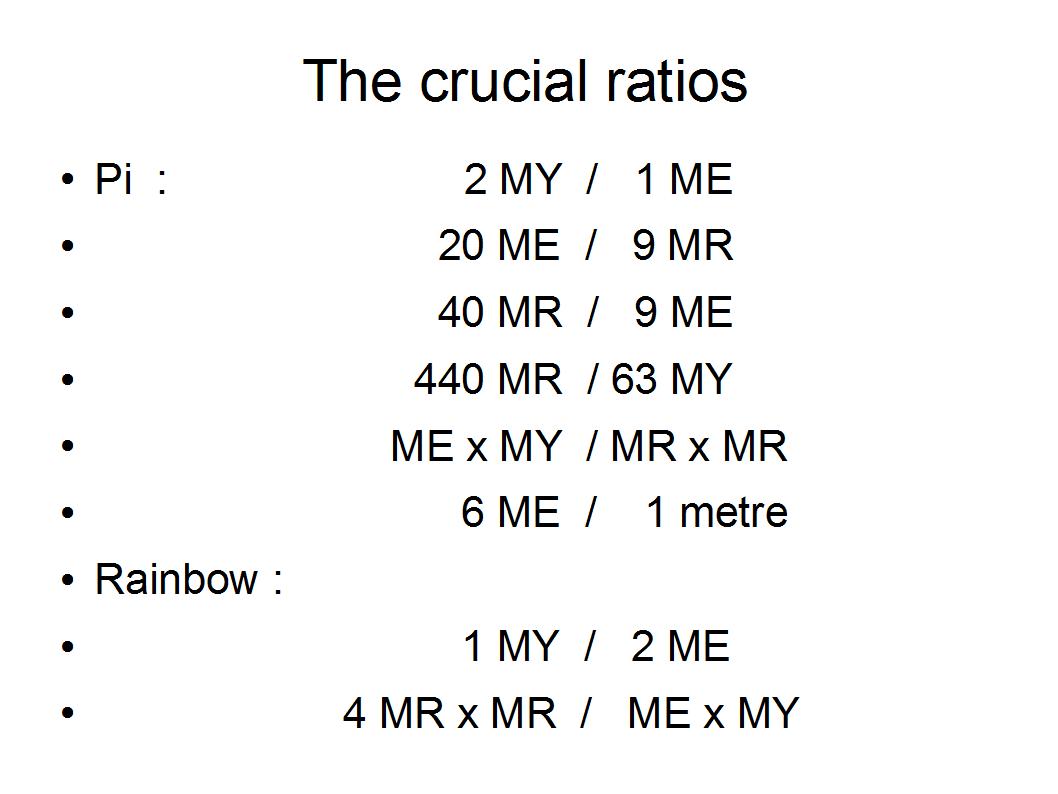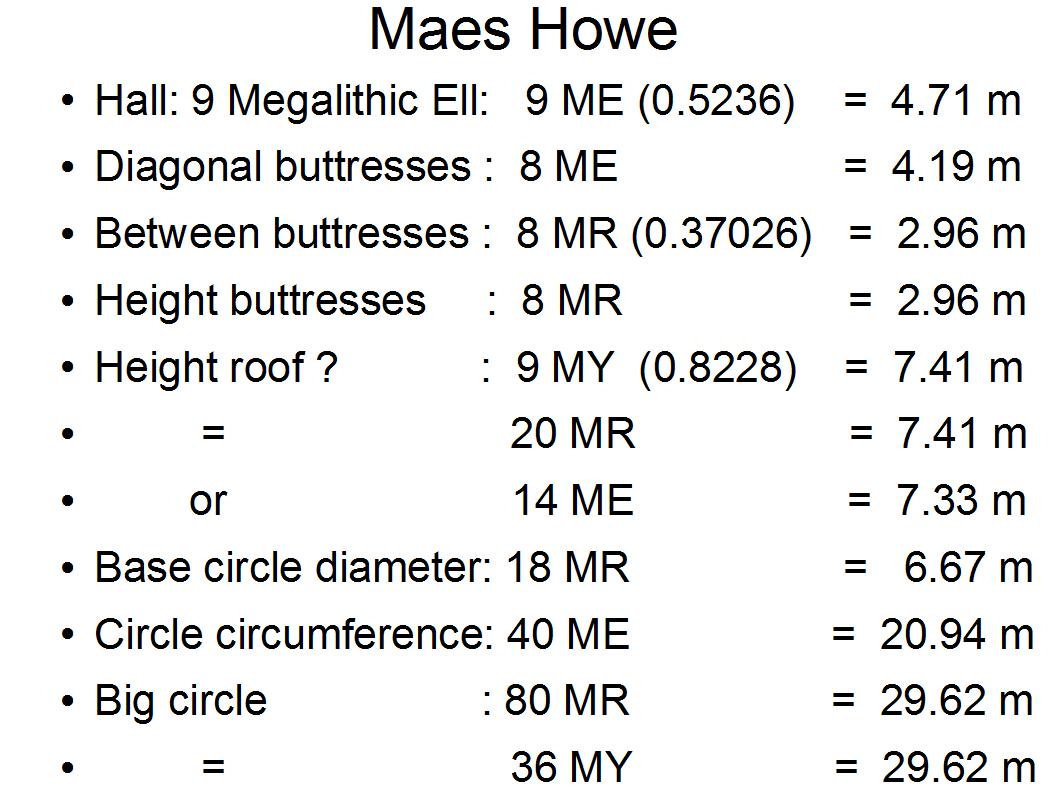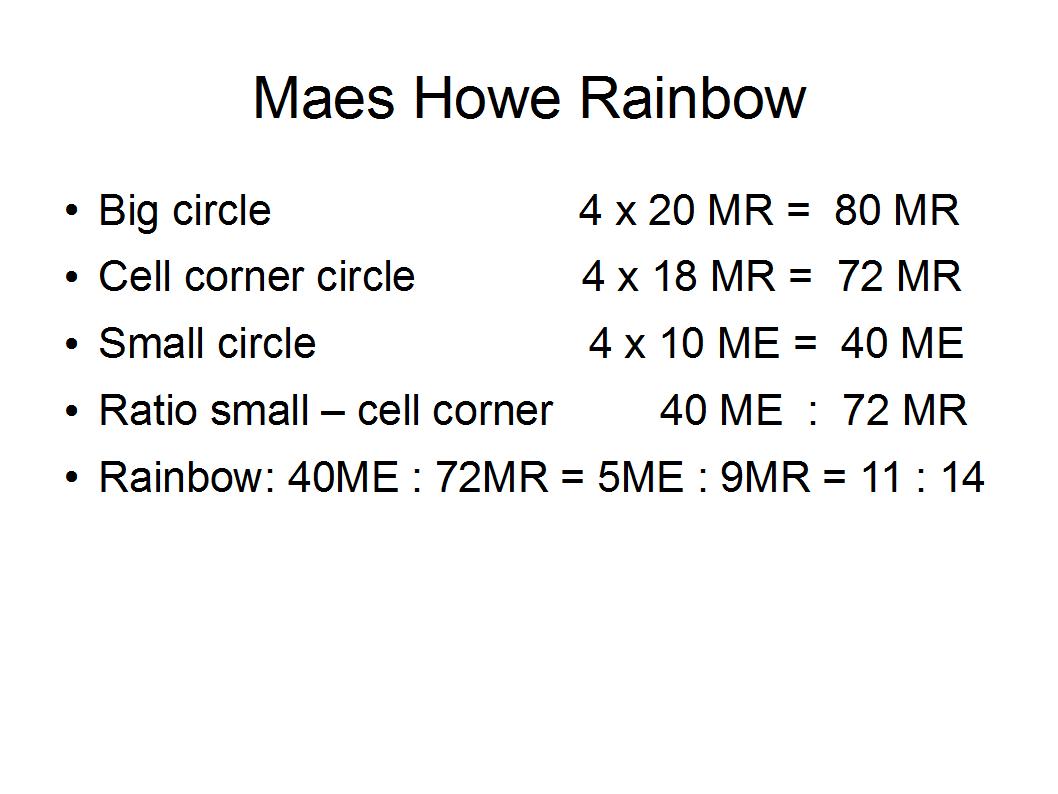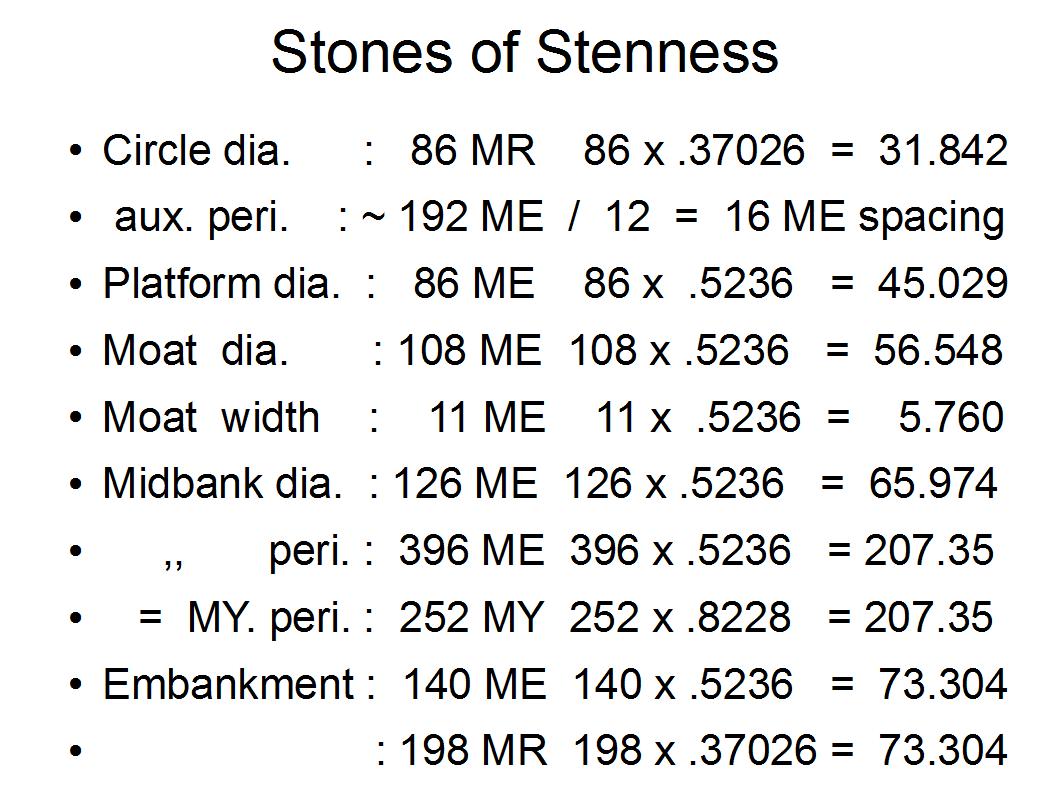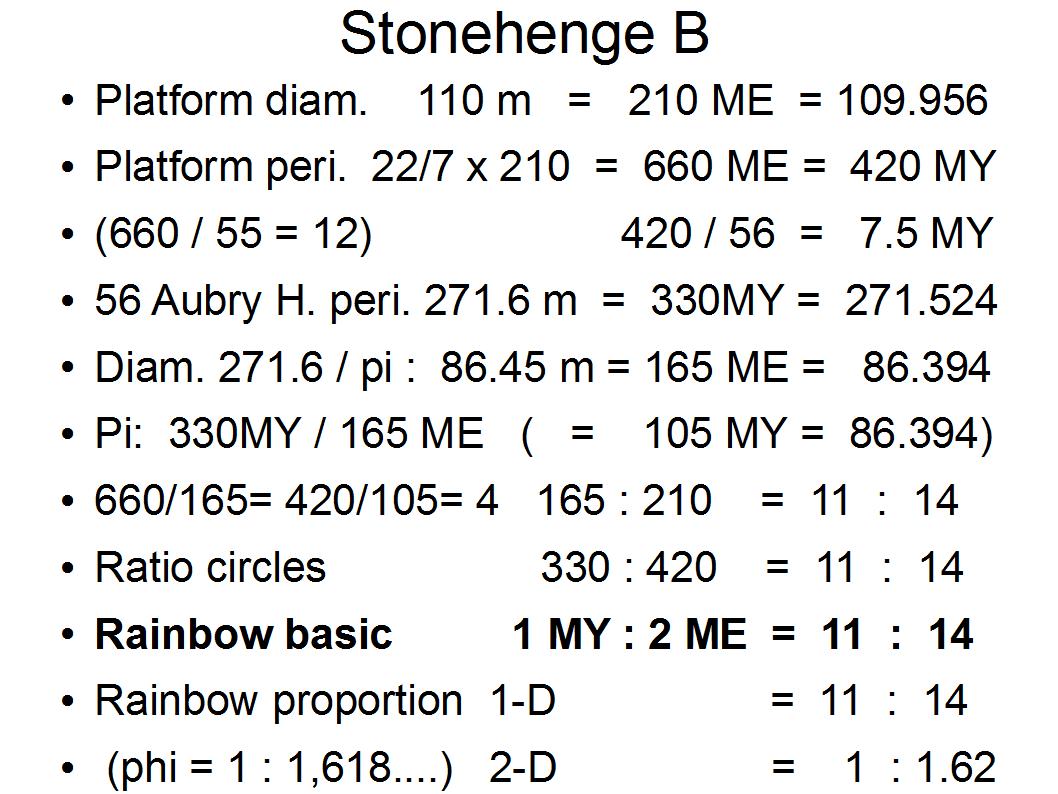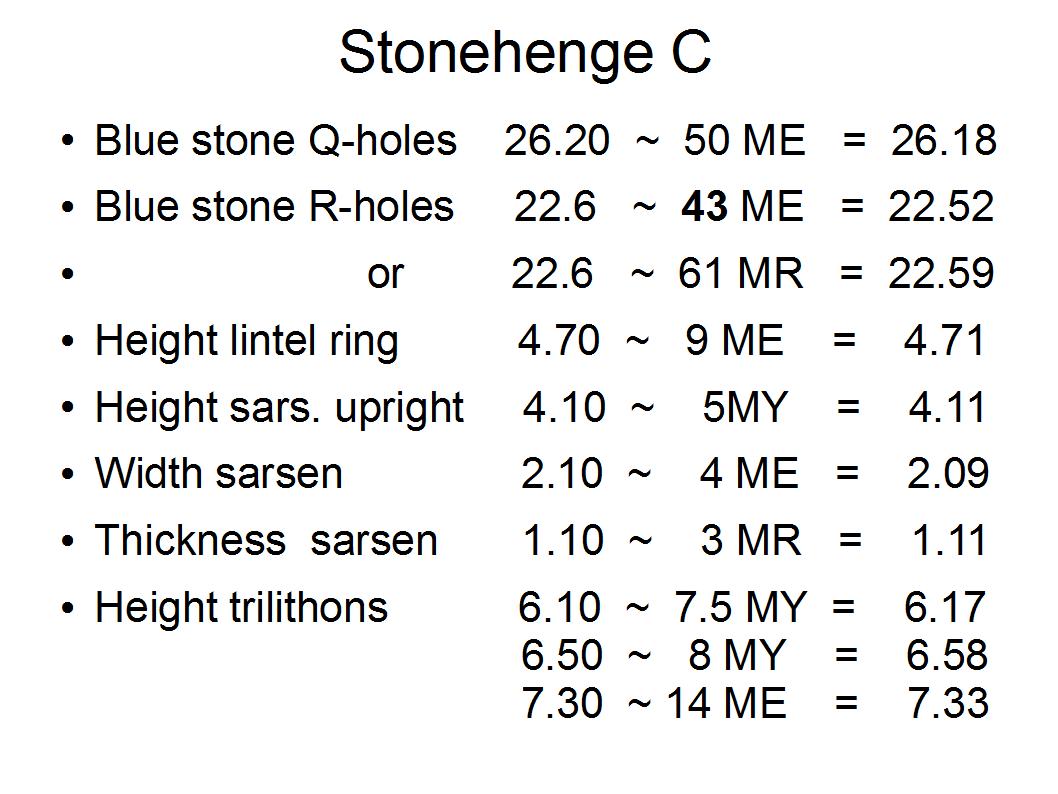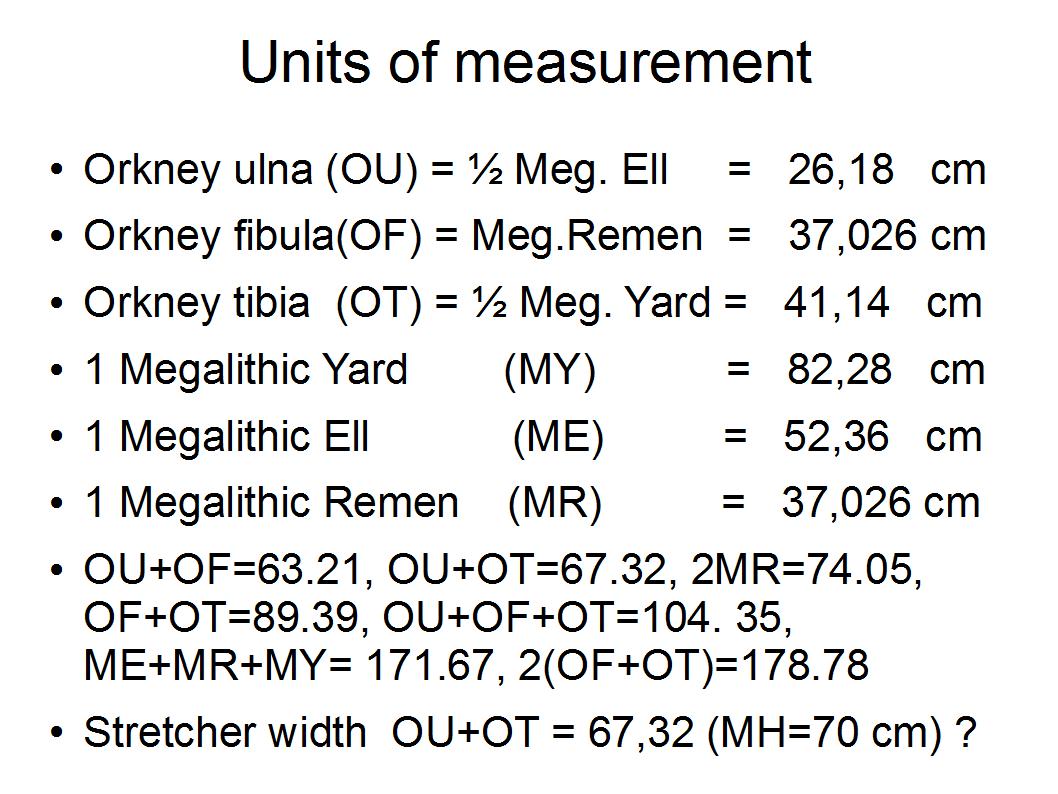The Neolithic Numbers
Preface:
Below you will find a mass of data that are geometrically related. The data , the natural numbers and ratios are placed in an intricate system of equivalent ratios in which all four basic lengths, like Pi is expressed as 2MY : 1ME = 2x 8228 / 5236 = 3.14 28…
Only maybe the true metrologist will be prepared to dive into these relationships, but I think it is good that I can show that with these basic lengths being created by the logic of the system a wonderful tool has been created. It is an extreme fortune that I have been able to show this convincing viability of the system in practice. It adds all to my claim that they used this system, which follows from the natural numbers themselves, even in een complementary setting.
Here again it is the usefulness that defines the construct like I claim is the case for the megalithic chambers being built as refuges during the climate change in the 4th millennium BCE (4000-2900, collapse Trichterbecher culture). I coined this millennium the ‘Neolithic Ice Age'(NIA), sustained by convincing graphs, comparing it with the recent Little Ice Age (1350-1850) (LIA). Only when we see the multi-functionality, we can appreciate how wise and practical they were.
I think we are failing our deep ancestry terribly when we do not do all our best to figure out what it was that they wanted to express in the architecture and geometry and numbers of their sites. Saying they couldn’t possibly know or do something is a sure sign of your own ignorance about the brilliance by which our ancestries have survived. I think the Egyptian megalithicum of the Pyramids was also a preservation of their deepest cosmological knowledge for ‘eternity’, chiseled in impervious stone, for others to gain wisdom from. (see my many pages on Giza).
Giza is not primarily built for the dead Pharaohs, but to eternalize basic mathematical and cosmolgical insights, that subsequently went lost.
Introduction
These are the bare data of major works of the British Isles, Maeshowe, Ring of Brodgar, Stones of Stenness and Stonehenge, all translated into the units of measurement as employed on this website. This is the system I have created on the basis of already known units which I have crafted in such a way that they have values which stand in a geometrical order.
[differences of thousandths (like 0.009 etc.) and less are considered ‘exact’, and thus fitting matches throughout these pages, it is an integral aspect of the model of approximation, and thus very suitable for rough material]
The units are the following, respectively: Megalithic Ell (ME), -Remen (MR), -Yard (MY), -Foot (MF), these are all based on human bone lengths of the larger Neolithic skeleton, the Ell on 2 male ulna (fore-arm), here called Orkney Ulna (OU), the Remen on 1 female fibula (calf) (OF), the Yard on 2 male tibia (shin) (OT), the Foot on 1 female humerus (upper-arm) (OH).
Ell (ME) = 52.360cm —– Ulna (OU) = 26.18cm
Remen (MR) = 37.025cm —– = Fibula (OF)
Yard (MY) = 82.280cm —– Tibia (OT) = 41.14cm
Foot (MF) = 29.620cm —– = Humerus (OH)
These values relate as follows:
11 ME = 7 MY
9 MY = 20 MR = 25 MF
99 ME = 140 MR
11 OU = 7 OT
9 OT = 10 OF
4 OF = 5 OH
the upper row works out as:
63 MY = 99 ME = 140 MR = 175 MF
We see that this is a fully integrated calculator, that it is in principle simple, but can be confusing because of the doubles and the halves and the ensuing ratios because for instance:
11 ME = 7 MY, but as a ratio it is 1 ME : 1 MY = 7 : 11, which looks like a mistake but is not, since
52.36 : 82.28 = 7 : 11 (52.36/7 = 7.48, this x 11 = 82.28)
So use a calculator when you think it is wrong, I have made mistakes in the past myself, but I think I’ve taken out most mistakes. If there are still mistakes I apologize for that, it does though not affect the consistency of the model as it stands. Remember it are all ‘approximations’ in terms of accepted mathematics because we stick to the rationals.
The practical explanation and applications of these numbers are given elsewhere (The Neolithic Numbers explained). This ordering is to show the recurrence of the same numbers and ratios in all the different buildings.
Copyright 2009/2013 Yan Goudryan
